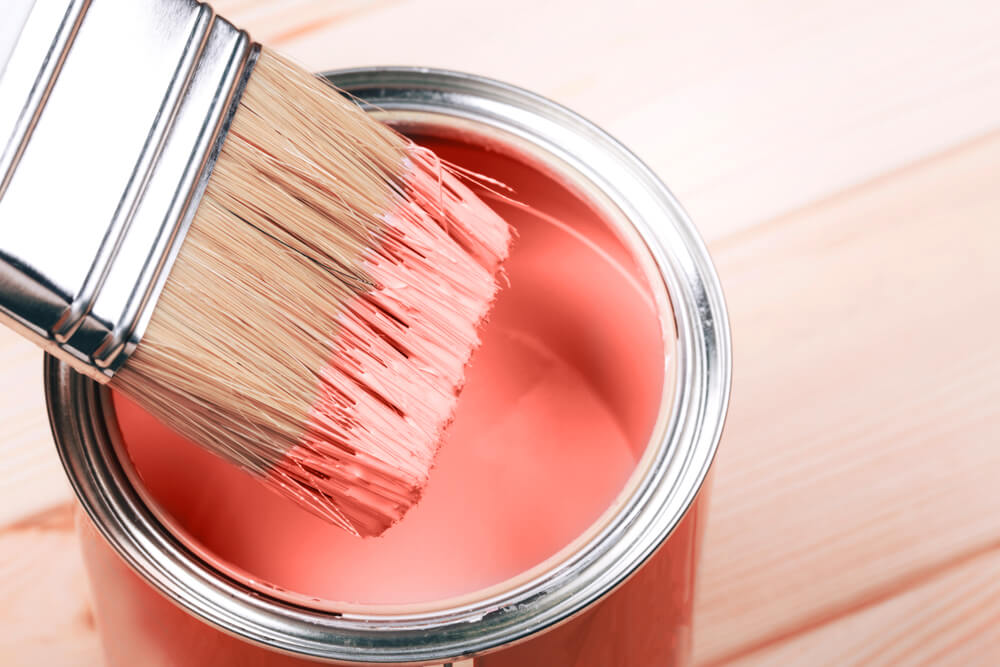Six Shades of Orange You Can Create Yourself

If you like the color orange, we’ll teach you how to combine colors to achieve six unique, beautiful, and very fashionable shades. This is useful for you to know because you can prepare the one you want and use it for your crafts or home renovations.
You may also use your mixtures on wooden furniture, chairs, doors, and frames, or even to create works of art! Keep reading to find out the exact formulas to produce shades such as mango or ocher.
Learn how to prepare six shades of orange
The orange color has several shades, but in its purest form, it’s a warm and striking tone. It’s a secondary color, that’s formed from a mixture of other colors, specifically red and yellow.
According to color psychology, orange symbolizes enthusiasm and exaltation. It has a warming effect and is said to increase potency. It’s also related to lust and sensuality. Next up, we’ll explain how you can create six shades of orange.
1. Pure orange
We’ll start with the origin and the ideal mix to achieve a perfect orange color. As we already mentioned, this tone is born from the combination of red and yellow.
There are many ways to achieve the color we’re looking for, but a traditional approach is to use 67 percent yellow mixed with 33 percent red. As red is quite strong, it’s better to use it in small amounts otherwise it can alter the expected result.
Now, looking at it from a more practical point of view, you can achieve the perfect shade by mixing one part red with two parts yellow. This will make it easier for you to calculate the proportions depending on the amount of orange paint you require.

2. Light or pastel orange
According to color psychology, too much orange can cause anxiety. Therefore, if you want to enjoy the calmer side of the color, you can create a light or pastel shade. In this case, you’ll need to add a third tone to the mix: white.
The best way to achieve pastel orange is by mixing 50 percent white with 33 percent yellow and 17 percent red. So, to make it practical, mix one-part red with two parts yellow and three (or more) parts white, depending on how pale you want it to be.
3. Ocher
The ocher color is a shade that’s located between orange and brown. It’s associated with autumn and the color of the leaves at that time of year. Creating this shade is very easy and we’ll teach you how to achieve it.
You’ll need 60 percent yellow, 30 percent red, and 10 percent blue. In simpler terms, mix three parts red with six parts yellow and one part blue.
4. Terracotta Orange
Terracotta is a shade derived from the color orange that’s more associated with the color brown. Many people also refer to it as a tile or brick color. It’s a color that will always remain fashionable and since it comes from clay, it’s considered a natural shade too.
To achieve this shade, a little more red is used and black is also added. The exact formula you’ll need to achieve this is 33 percent red, 33 percent white, 22 percent yellow, and 11 percent black. In other words, mix three parts of red with two parts yellow, three parts white, and one part black.
5. Salmon
The salmon color has been in trend forever. It’s been used for centuries for art on walls, furniture, bedding, and clothing.
If you love this shade, you must learn how to create it because it’s so simple. Just mix 50 percent white with 37 percent red and 12 percent yellow. To make it easier, mix three parts red with one part yellow and four parts white.

6. Mango
The mango is a delicious tropical fruit with a beautiful color. It’s a strong, striking orange tone, but rather yellowish too. To achieve it, mix 60 percent yellow and 60 percent white, and 20 percent red. In practice, that’s one part red with three parts yellow and one part white. Too easy!
Which of these shades of orange are you going to prepare first?
We’ve taught you how to prepare six different shades of orange so that you can paint whatever you want with your favorite shade. Even from these formulas, it’s possible to create other, more personalized shades. Take the risk and transform your home with color.
All cited sources were thoroughly reviewed by our team to ensure their quality, reliability, currency, and validity. The bibliography of this article was considered reliable and of academic or scientific accuracy.
- El color y las emociones. Psicologia del color. Escola D’Art I Superior de Disseny De Vic.